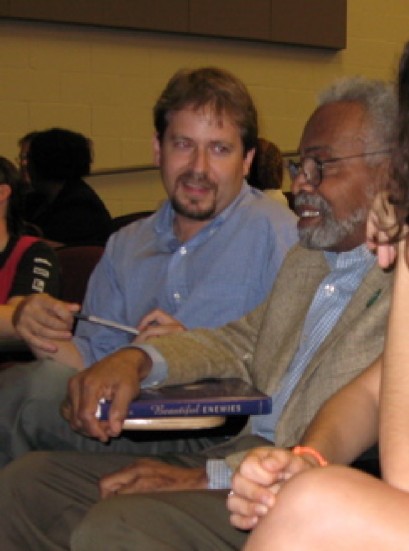from
“Roberto Bolaño and the New York School of Poetry” — on the OUPblog
At the novel’s center is a Chilean university professor named Óscar Amalfitano who falls in love with a
young Mexican artist whose specialty is making forgeries of paintings by … Larry Rivers, of all
people. Rivers, of course, was Frank O’Hara’s close friend, collaborator, and sometime lover, and the
painter who is perhaps most closely allied, both socially and aesthetically, with the New York poets.
This unusual detail — and the figure of Rivers himself — becomes a significant thread in Bolaño’s
novel. The young artist, Castillo, explains that he sells the forgeries to a Texan who “then sells them to
other filthy rich Texans.” When Castillo informs Amalfitano that Rivers is “an artist from New
York,” he replies “I know Larry Rivers. I know Frank O’Hara, so I know Larry Rivers.”
Soon after, as Amalfitano meditates on the strangeness of this situation — the amateurish Rivers’ forgeries, the Texans who buy them, and the art market in New Mexico, Arizona, and Texas — Bolaño writes:
“he immediately pictured those fake Berdies, those fake camels, and those extremely fake Primo Levis (some of the faces undeniably Mexican) in the private salons and galleries, the living rooms and libraries of modestly prosperous citizens… And then he imagined himself strolling around Castillo’s nearly empty studio, naked like Frank O’Hara, a cup of coffee in his right hand and a whiskey in his left, his heart untroubled, at peace with himself, moving trustingly into the arms of his new lover” (58).
Near the end of the book, the Rivers plot culminates with a strange and funny anecdote about running into Larry Rivers himself at an exhibition of his work.
The novel also features an amusing collection of Amalfitano’s “Notes for a Class in Contemporary Literature: The Role of the Poet.” This takes the form of an almost Buzzfeed-ready list that consists of items like “Happiest: Garcia Lorca,” “Banker of the soul: T.S. Eliot,” and “Strangest wrinkles: Auden.” Among other names cited in this rather crazy, irreverent list, one finds several important figures of the New York School – Frank O’Hara, Ted Berrigan, and Diane Di Prima — getting top honors in some strange categories: “Biggest cock: Frank O’Hara,” “Best movie companion: Elizabeth Bishop, Berrigan, Ted Hughes, José Emilio Pacheco,” and under “Biggest nervous wreck: Diane Di Prima”.

No comments:
Post a Comment